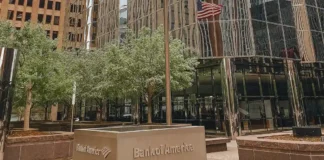Despite investor demand, several of the best-rated U.S. companies are delaying the issuing of new bonds in favour of shorter-term debt alternatives as a means to a stronger funding climate in a year or two.
Bank term loans, borrowing from bridge loans, and bond sales with maturities of five years or less are some of the shorter-term debt alternatives, according to debt capital market bankers and credit investors in the US. Short-term debt is now more expensive than debt with longer tenors, while loans can be more affordable than issuing bonds.
By making this decision, these companies are essentially wagering that the central banks’ vigorous interest rate increases, which have increased borrowing costs, will result in recessionary headwinds and eventually reduce Treasury yields. They therefore want to wait out the rise in interest rates rather than commit themselves to higher all-in financing costs and longer-term debt at this time.
According to Maureen O’Connor, global head of high-grade debt syndicate at Wells Fargo, they have seen signs of issuers leaning on shorter-term debt options as an option to long-dated bond financing in an attempt to bridge to a stronger funding climate in the future.
It is challenging to refute the reasoning. The pattern, which is beginning to get attention, demonstrates how businesses are coping with historically extreme fiscal policy tightening and market volatility.
Some bankers claimed that the strategy might be dangerous. In addition to swiftly hiking interest rates, the U.S. Federal Reserve has also forewarned the markets that it would keep them high for longer. Companies hoping for longer-lasting stability may need to wait a while, according to the global co-head of Barclays’ investment grade syndicate, Meghan Graper. Despite this, there is a decreasing demand for high-grade bonds, with September’s issuance volume on course to be the lowest in ten years, as per data source Informa Global Markets.
At a time when investors need more safe havens to hide in, this has hurt the supply of high-quality assets. Additionally, Wall Street banks’ fees would be reduced. Even as investors sought out higher quality issuers, head of investment grade credit at Payden & Rygel, a fund manager, Natalie Trevithick stated many lenders have been withdrawing from the markets.
What they have observed is a trend toward borrowing with shorter maturities, according to Trevithick. For example, most bankers, analysts, and strategists thought that Oracle Corp would sell $20 billion in bonds to pay for the purchase of Cerner Corp, a healthcare IT company.
In June, the $28.2 billion deal was finalised. Typically, businesses take out bridge loans to finance mergers, but before the deal closes, they pay it off with a long-dated bond issue.
Instead, Oracle borrowed $15.7 billion from a bridge loan with a one-year maturity and borrowed $4.4 billion in term loans with three- and five-year maturities that may be returned early to repay the bridge loan. In addition, the tech giant increased the amount of its commercial paper programme by twofold, to $6 billion, and indicated that it may increase the term loan’s size to $6 billion.
More recently, Adobe Inc. announced that it would use cash on hand, equity, and, if necessary, a term loan to pay for its $20 billion takeover of cloud-based design platform Figma.
According to a spokeswoman for Adobe, the company’s cash flow allowed it to finance the transaction. The company confirmed, if a term loan is required owing to timeliness of the deal closure, they aim to pay it back shortly.
Bond syndicate desks predicted that September would see up to $150 billion in new bond supply based on their view of the issuing pipeline, but as of September 21st, just $73.65 billion had reached the primary markets, as per Informa data.
According to the data, approximately 43% of all newly priced high-grade bonds in September had maturities of up to five years, compared to roughly 32% in August and 28% in September of the previous year. This has occurred despite a spike in the two-year and five-year Treasury yields that increased the cost of short-term financing during the month.
Undoubtedly, not all businesses have the financial means to await better funding options. In the market for trash bonds, for example, some companies are asking for higher rates to raise financing.
Stronger businesses, however, have more options and are emerging from a period of debt bingeing. Accordingly, companies have the choice to wait or look at other short-term funding options in the current context of higher absolute coupons than those of the previous ten years.



















